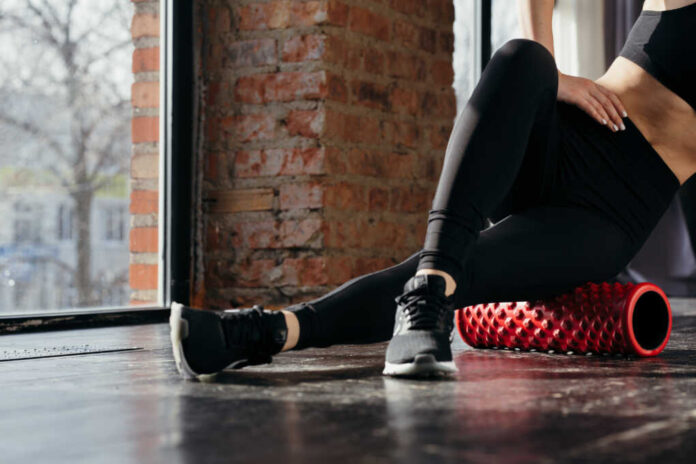
Investing in hip mobility not only enhances athletic performance but can be a game-changer for preventing debilitating injuries that might otherwise cut short your active lifestyle.
At a Glance
- Healthy hip mobility serves as a critical bridge between upper and lower body, playing a central role in daily movements and athletic performance
- Improved hip flexibility translates to more fluid movements, greater power generation, and reduced risk of compensatory injuries in the back and knees
- Five key muscle groups affect hip function: gluteal muscles, adductors, iliopsoas, quadriceps, and hamstrings
- Regular mobility training can produce noticeable improvements within weeks to months with proper technique and consistency
- Poor hip mobility can negatively impact posture, leading to anterior pelvic tilt and lower back issues
Why Hip Mobility Matters
Hip mobility serves as the foundation for nearly all physical activities, from simple daily movements to high-performance athletics. The hip joint functions as a critical bridge between your upper and lower body, facilitating proper movement patterns and force transfer throughout your kinetic chain. When hip mobility is restricted, your body creates compensatory patterns that put excessive stress on the knees, ankles, and lower back. This compensation doesn’t just diminish athletic potential—it significantly increases injury risk across multiple body regions and can make even routine activities like climbing stairs or bending to tie shoes unnecessarily difficult.
— Uplift Labs (@upliftlabs) May 29, 2024
Better hip mobility directly enhances athletic performance by allowing a greater range of motion, which translates to more powerful movements, improved speed, and heightened agility. For active adults, this means more efficient energy use during exercise, reduced fatigue, and increased longevity in physical activities. The benefits extend beyond athletics—improved posture, reduced back pain, and enhanced body awareness all contribute to better quality of life, especially as we age.
Understanding Hip Anatomy and Function
The hip is a ball-and-socket joint designed for both stability and mobility, requiring a delicate balance between the two. Five main muscle groups directly influence hip function: the gluteal muscles stabilize the pelvis and power hip extension; the adductor muscles facilitate inner thigh movement; the iliopsoas muscles drive the body forward during walking and running; the quadriceps stabilize the knee during hip movements; and the hamstrings bend and rotate the hip joint. When these muscle groups work together properly, they create fluid, powerful movement patterns essential for athletic performance.
It’s important to understand the distinction between mobility and flexibility. Hip mobility involves the active control and movement within your hip’s full range of motion, while flexibility refers to the passive range available to the joint. Both are crucial, but mobility incorporates strength and motor control that flexibility alone doesn’t address. Tightness in any of these muscle groups can create imbalances that pull the pelvis out of alignment, often resulting in anterior pelvic tilt—a common posture issue that contributes to lower back pain and hampers athletic performance.
Benefits Beyond Performance
Investing in hip mobility yields benefits far beyond enhanced athletic performance. Proper hip function improves posture and spinal alignment, which can significantly reduce back pain—a common complaint among adults over 40. Daily activities become easier and more comfortable, as bending, squatting, and transitioning from sitting to standing require less effort and cause less discomfort. Enhanced hip mobility also improves balance and stability, reducing fall risk—a critical benefit as we age.
Restricted hip mobility often leads to compensatory movement patterns that cascade throughout the kinetic chain. When hips can’t move properly, knees and ankles take on excessive load, potentially leading to pain and injury in those joints. Similarly, the lower back often compensates for hip immobility, creating excessive strain and increasing risk of disc issues. By addressing hip mobility proactively, you can interrupt this damaging chain of compensation and protect multiple areas of your body simultaneously.
Effective Approaches to Improving Hip Mobility
Consistent practice is key to improving hip mobility, with most people seeing noticeable improvements within weeks to months of regular work. Dynamic stretching before activity increases body temperature and blood circulation while preparing the body for movement. This approach is particularly effective for sports-specific benefits and should be prioritized over static stretching before exercise. A full hip mobility program should include exercises targeting all five major muscle groups influencing the hip joint.
Effective exercises include hip circles to improve joint lubrication and range of motion, seated hip lifts to strengthen the iliopsoas muscles, and crescent lunges to stretch hip flexors while engaging glutes. A body scan—a mindfulness technique where you systematically check for areas of tension—can help identify specific tight spots to target with your mobility work. Proper form is essential, as is avoiding aggressive overstretching, which can lead to injury and ultimately setbacks in your mobility journey.

















